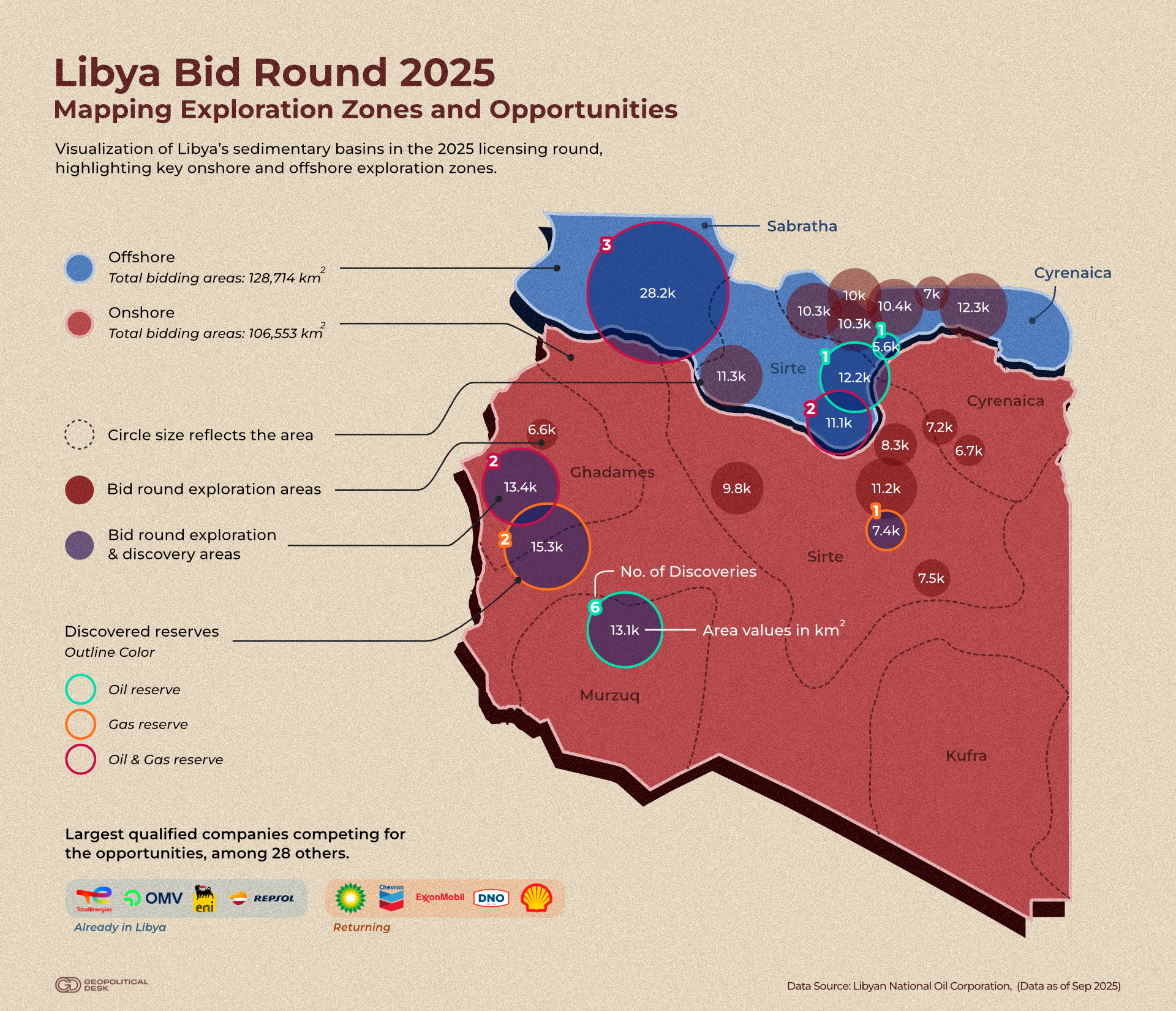Libyan production has held steady above 1.3 million barrels per day (bpd) in 2025, with exports averaging 1.2 million bpd across the first seven months. Oil revenues reached $11.3 billion, driving a projected 14.3% GDP growth rate.
Yet oil-led growth in Libya has often been cyclical, underpinned by activity resumption following oil blockades and driven by squeezing ageing fields rather than bringing new capacity online.
Key risks at glance
| Political | Security | Operational | Economic |
|---|---|---|---|
| Rival governments create legal and contractual uncertainty. | Militias act as gatekeepers; access often requires costly local deals. | Output ceiling at ~1.4m bpd due to ageing fields and underinvestment. | Subsidies distort markets, incentivise smuggling, and exacerbate shortages. |
| Weak international mediation; risk of renewed conflict remains high. | Infrastructure vulnerable to sabotage or partial shutdowns. | Heavy reliance on rejuvenating old wells; only marginal capacity added. | Fiscal windfalls not reinvested in energy projects or infrastructure. |
| Oil used as leverage in political disputes; oil blockades remain a recurring threat. | Persistent threat of conflict in western Libya risks engulfing energy facilities. | Licensing round is promising, but implementation depends on stability. | Ongoing liquidity and currency crises risk triggering social unrest. |
Incremental gains, fragile base
Libya remains divided between two rival governments: the Government of National Unity (GNU) in Tripoli, led by Abdulhamid Dabaiba, and the eastern-based Government of National Stability (GNS).
Despite not being internationally recognised, the latter is backed by Khalifa Haftar’s Libyan National Army (LNA) and controls around 70% of the country’s oil fields, making it a key stakeholder and partner for firms invested in the energy sector.
Caught between the hammer and the anvil, the National Oil Corporation (NOC) has shown strong resilience by delivering steady if modest gains. Throughout 2025, output has held above 1.3 million barrels per day, supported by maintenance, re-entry drilling, and adoption of new technologies.
Exports rose to their highest levels in five months in July, keeping state revenues healthy at $11.3 billion in the first seven months of 2025.
Still, these are incremental wins. Major investments and projects are yet to be realised while Libya remains reliant on revitalising legacy assets. Fiscal windfalls are often consumed by salaries and subsidies rather than reinvested in modernisation and expansion.
The risk is a production ceiling that entrenches stagnation and could lead to output drops in the medium-term if there is no large influx of foreign capital and technology.
A turning point in foreign engagement
If domestic progress is incremental, international engagement has taken a more decisive turn.
Major international oil corporations, primarily European such as Italy’s Eni, France’s TotalEnergies and Spain’s Repsol have strengthened their presence over recent years and placed Libya back on the global energy map - notably for European markets weaning off Russian hydrocarbons.

The last few months have also marked the most significant U.S. re-entry in over a decade. The NOC held high-level talks with Chevron and signed a memorandum of understanding with ExxonMobil covering offshore and Sirte Basin exploration. A Libyan-American Energy Forum, due in January 2026, will seek to translate this momentum into capital inflows.
For Washington, engagement is about more than economics. Libya is seen as a lever to counter Russian and Turkish influence, ensure European energy supply, and stabilise oil pricing. For Tripoli, the challenge is ensuring that this momentum turns into wells drilled and fields developed, a process that hinges on political predictability.


